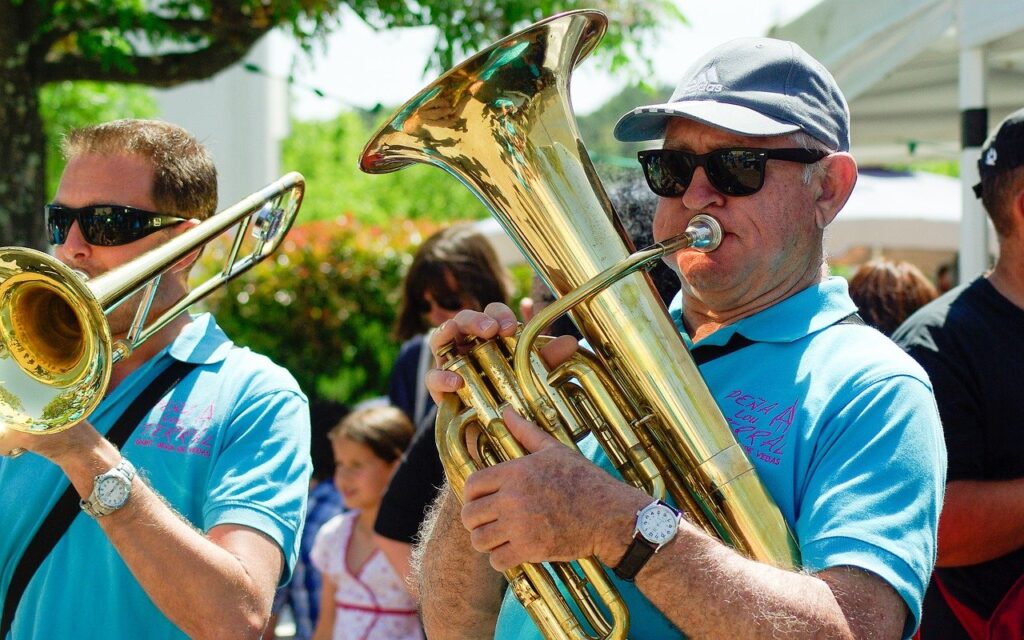For a strong, bold sound, you can’t go wrong with a brass instrument. But how much do you know about the brass family? Check out these fun facts!
Longer than they seem
You’ve no doubt noticed that brass instruments tend to bend and coil quite a bit. A French horn would actually be 12 to 13 feet long were you to straighten it out. But the honor of longest brass instrument goes to a particular contrabass tuba at a whopping 34 feet! Standard-sized tubas are about 16 feet long. — still nothing to sneeze at.
In addition to be the longest brass instrument, the tuba is also the largest overall and creates the lowest notes. In comparison, the smallest brass instrument is the cornet, which looks a lot like a trumpet but is even more popular among brass musicians.
Yes, they’re really made of brass … generally
The ancestors of today’s brass instruments were made of animal horns, seashells, wood, or tusks. But today they’re typically made of brass and basically consist of a long pipe with one end that flares out.
That said, some experts argue that what makes a brass instrument is not the material it’s made from but the way sound is created — namely, by the player vibrating their lips against the mouthpiece. After all, there are “brass” instruments made of wood, such as the didgeridoo, and woodwind instruments manufactured in brass, such as the saxophone.
Since the 2010s, some brass instruments are even being manufactured from plastic, generally used by beginners or for practice purposes.
Great versatility
Brass instruments figure prominently in marches, orchestral music, jazz, ceremonial music (military bugle, for example), and more. There are many master musicians, each with a unique sound. Some of the most recognized names include Miles Davis, Dizzy Gillespie, Louis Armstrong, and Wynton Marsalis — all best known for playing the trumpet.
But there are many other great brass musicians worth checking out. Here are just a few.
- Trombonist Miff Mole was born in 1898 and was influential in the 1920s New York jazz scene. You can hear on YouTube his composition “There’ll come a time (wait and see)” that was featured in the soundtrack for The Curious Case of Benjamin Button.
- Tuba player Carol Jantsch was the first woman to be the principal tuba player in the Philadelphia Orchestra, where she is still one of the group’s youngest members.
- French hornist David Cripps played in the soundtracks for the original Star Wars trilogy and the Superman movies. Here’s an interview with Cripps where he talks about Princess Leia’s Theme and then plays it for us. He is currently the director of Orchestra Northern Arizona.

